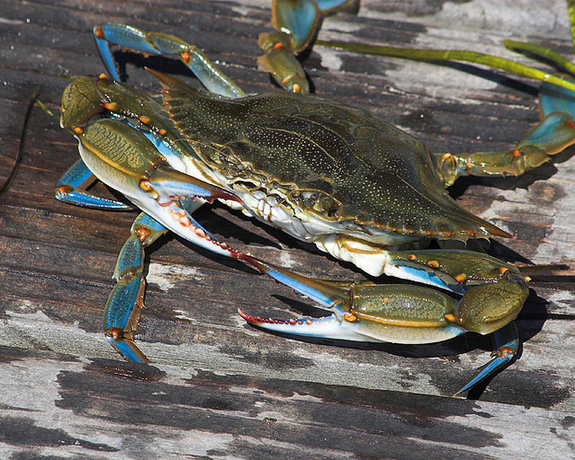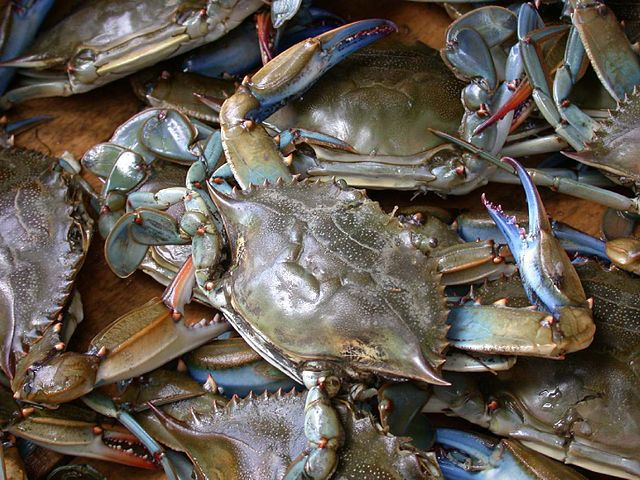Maryland blue crab; photo © copyright 2006 Wallace Billingham on Flickr (all rights reserved; used by permission).
Official State Crustacean of Maryland
Maryland designated the blue crab as the official state crustacean in 1989. The Chesapeake Bay is famous for its blue crabs. All Aquatic-Life Symbols
Blue Crab Facts
The blue crab's scientific name (Callinectes sapidus Rathbun) translates as "beautiful swimmer that is savory." The name also honors Mary Jane Rathbun, the scientist who described the species in 1896. The blue crab is native to the western edge of the Atlantic Ocean from Nova Scotia to Argentina.
The blue crab is an omnivore (eating both plants and animals). Blue crabs typically consume thin-shelled bivalves, annelids, fish, plants and nearly any other item they can find, including carrion.
Over the years the harvests of the blue crab dropped and the Maryland Department of Natural Resources has created stricter guidelines for harvesting blue crabs to help increase populations (including raising the legal size from 5 to 5¼ inches and limiting the days and times they may be caught).
Life is tenuous for baby blue crabs. As they grow from a larval stage into a recognizable crab, most fall prey to predators. Few survive their first year. For the survivors, life expectancy in the Chesapeake Bay is estimated at 2 and 1/2 to 3 years (most are harvested before they get any older). Under better circumstances, scientists believe that blue crabs could live as long as 8 years.


